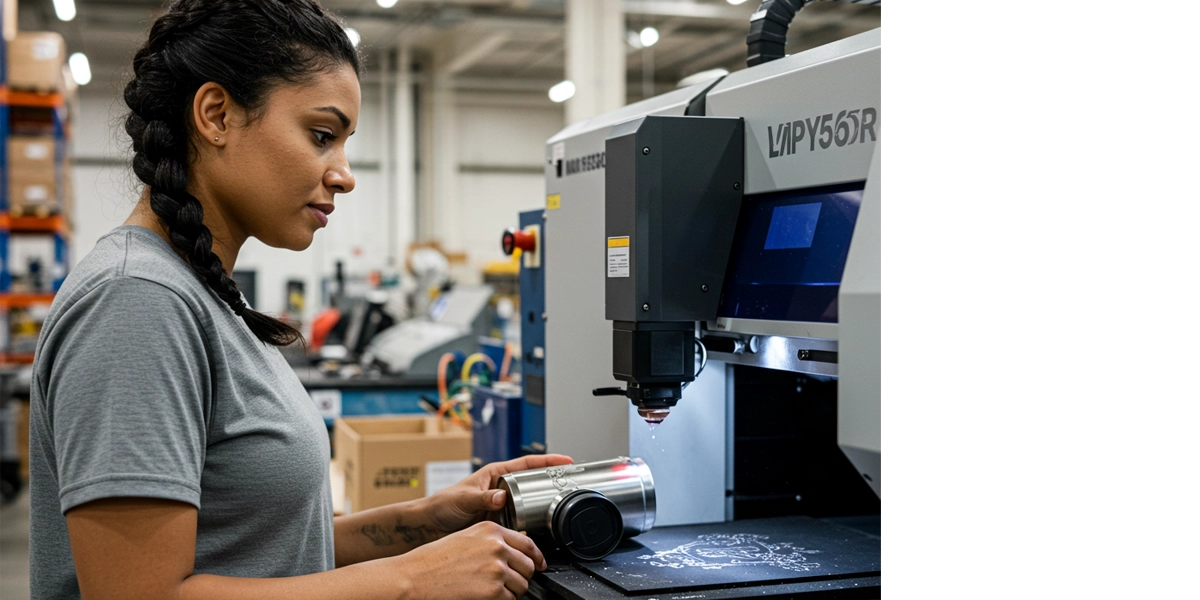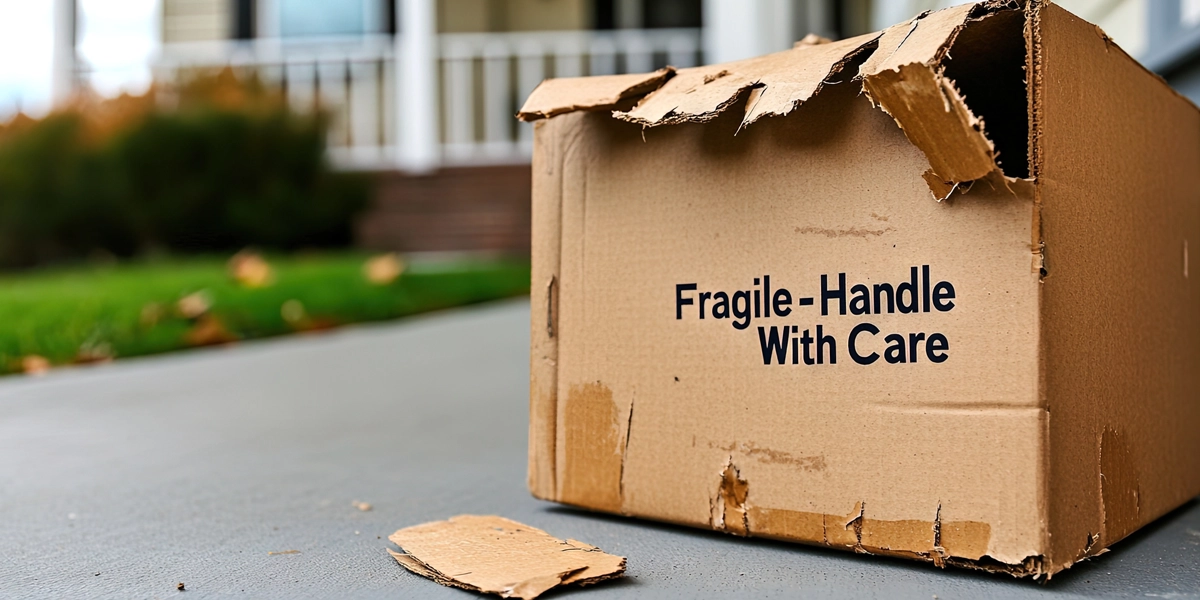In This Article:
Damaged returns are a big problem for ecommerce businesses. These are products that customers send back because they’re defective, got damaged during shipping, or simply didn’t meet their expectations. Dealing with such returns can be costly, create inventory management issues, and potentially harm customer satisfaction. It’s crucial for your business to tackle these challenges head-on in order to maintain a strong brand reputation and lower overall logistics costs.
One effective solution is to partner with a fulfillment provider like One World Direct (OWD). OWD specializes in handling returns and has developed advanced processes to minimize the impact of damaged items. OWD ensures that your returns are handled smoothly, leading to better overall customer experiences.
In this article, we’ll cover three key areas related to damaged returns in ecommerce:
- Understanding Product Returns: We’ll explore common reasons why products are returned in online shopping and discuss the importance of implementing quality control measures.
- The Return Process in Ecommerce: A detailed overview of how the typical return process works in the world of online retail and the impact it can have on how customers perceive your brand.
- Organizations That Could Use Your Damaged Returns: Specific examples of how various organizations such as Goodwill, Rescue Missions, and local charities can repurpose damaged items for good causes.
If you’re interested in not only optimizing your operations through expert fulfillment services but also boosting your sales with ecommerce personalization, then One World Direct (OWD) is the right choice for you. They offer a wide range of services, including state-of-the-art P2C technology that can significantly increase your conversion rates by offering easy ecommerce product customization for your shoppers.
Understanding Product Returns
In ecommerce, product returns happen for various reasons, usually because customers’ expectations were not met. Here are some common reasons why customers return products:
- Size and fit issues: Apparel items may not fit as expected.
- Mismatched product descriptions: Discrepancies between the product description and the actual item.
- Change of mind: Customers may simply change their mind after purchase.
Offering effective ecommerce return solutions directly impacts customer satisfaction. Making it easy for customers to return products can lead to a positive post-purchase experience and build brand loyalty. On the other hand, complex or inconvenient return processes can result in frustration and dissatisfaction.
The Impact of Returns on Customer Satisfaction
Customer satisfaction is crucial for any business, and it plays a significant role in the success of an ecommerce store. When customers are happy with their purchases and overall shopping experience, they are more likely to:
- Leave positive reviews
- Recommend the brand to others
- Make repeat purchases
On the flip side, when customers encounter issues with their orders or face difficulties when trying to return products, it can lead to:
- Negative reviews
- Poor word-of-mouth publicity
- Decreased likelihood of future purchases
The Role of Quality Control in Reducing Returns
One major factor that contributes to product returns is receiving defective items. Whether it’s a manufacturing defect or damage during shipping, these issues can significantly impact customer satisfaction.
Implementing robust quality control processes is essential for identifying and resolving defects before products are shipped to customers. By doing so, businesses can:
- Minimize the number of defective items reaching customers
- Reduce return rates due to product faults
- Improve overall customer satisfaction
Leveraging Technology for Better Returns Management
Technology plays a crucial role in optimizing various aspects of business operations, including returns management. Here are two ways automation and real-time visibility can improve the return process:
Automation Tools: Using software or systems that automate certain steps in the return process can help:
- Speed up processing times
- Reduce manual errors
- Provide better tracking and status updates to customers
Real-Time Visibility: Having access to accurate and up-to-date information about return shipments enables businesses to:
- Proactively address any issues or delays
- Keep customers informed about the progress of their returns
- Make data-driven decisions for process improvements
By leveraging these technological solutions, ecommerce companies can enhance efficiency, deliver a better customer experience, and ultimately reduce return rates.
The Return Process in Ecommerce
Understanding the ins and outs of the return process is crucial for any ecommerce business. Here’s how it typically works:
- Initiating the return: The customer starts the return process, usually online or by contacting customer service.
- Generating the return label: The customer receives a return label that they can print out or access digitally.
- Packaging the item: The customer securely packs the item, making sure it’s protected during transit.
- Sending it back: The customer ships the package back to the designated fulfillment center using the provided label.
- Inspecting the item: Once the package arrives at the fulfillment center, it is inspected to assess its condition and determine whether it’s eligible for a refund or exchange.
A well-designed returns management process is essential for smooth operations. Here are some key benefits of using automation tools and real-time tracking:
- Efficient processing: Automated sorting and scanning minimize errors that can occur with manual handling.
- Transparent communication: Both customers and businesses can easily check the status of returns, promoting clear communication.
- Inventory accuracy: By integrating return data with inventory systems, stock levels can be promptly updated.
It’s important to note that how customers perceive this return experience can greatly impact their opinion of your brand. Simple and convenient returns build trust and loyalty, while complicated processes can harm your reputation. Making sure the return journey is hassle-free increases the likelihood of repeat purchases, reinforcing your brand’s dependability.
Did You Know These Organizations Could Use Your Damaged Returns?
1. Goodwill
Goodwill is a well-known organization that accepts a wide range of donations, including damaged items. Their donation policies are comprehensive, extending to various categories such as clothing, furniture, and electronics. Here’s how Goodwill handles your damaged goods:
- Assessment Process: When you donate items to Goodwill, they undergo a detailed assessment process. This step determines whether the items can be resold in their thrift stores or need to be recycled. For example, slightly damaged clothing may still have resale value, while severely damaged electronics might be earmarked for recycling.
- Impact on Community Programs: The revenue generated from the sale of these goods directly funds various community programs. These initiatives include job training programs, employment placement services, and other community-based support systems.
Categories of Accepted Items
- Clothing: Even with minor imperfections, donated clothes can be repurposed or sold at discounted prices.
- Furniture: Damaged but repairable furniture pieces are often refurbished and sold.
- Electronics: Non-functional electronics are either repaired for resale or dismantled for parts recycling.
- Home Goods: Gently used household items such as artwork, kitchen supplies, and unopened toiletries are popular items at secondhand stores.
Donating to Goodwill not only helps reduce waste but also supports its mission of enhancing the dignity and quality of life for individuals and families.
2. Rescue Mission
Rescue Missions are crucial in helping homeless individuals and those in need. They do this by running thrift stores that sell donated items, including damaged ones, so that nothing goes to waste. Their goal is to determine if damaged goods can be fixed or repurposed through effective inventory management strategies.
Types of Items Accepted by Rescue Missions:
- Household Appliances: Even if slightly damaged, appliances such as microwaves, blenders, and coffee makers can be refurbished and sold at affordable prices.
- Books: Gently used or slightly damaged books are often accepted and sold to fund various programs.
- Children’s Toys: Toys with minor defects can be fixed or used for parts in other toys.
By partnering with Rescue Missions, businesses can donate their damaged returns while making a positive impact on the community.
Rescue Missions not only provide support to those in need but also contribute to sustainability efforts by reducing waste. Their thrift stores serve as centers where donated items generate income for important services and programs that aim to uplift the community.
3. Clothing Recycling Programs
There are more options for getting rid of damaged items than just dropping them off at a regular donation center. Textile recycling programs are specifically designed to handle old clothes and play a crucial role in reducing fashion waste.
Environmental Benefits:
Here are some of the positive impacts these programs have on the environment:
- Less Waste in Landfills: Recycling textiles means less trash going into landfills.
- Preserving Resources: When we recycle clothes, we don’t need to use as many new materials.
Notable Organizations and Fashion Brands:
Several organizations and companies have launched their own initiatives to promote clothing recycling:
- H&M’s Garment Collecting Initiative: H&M encourages people to bring any unwanted clothes, regardless of brand or condition, to their stores for recycling.
- Patagonia’s Worn Wear Program: Patagonia focuses on repairing and reusing outdoor gear to extend its lifespan.
- The North Face’s Clothes the Loop Program: The North Face accepts used clothing and shoes from any brand, and participants receive discounts on future purchases.
Impact on the Fashion Industry:
These recycling efforts have a positive impact on the fashion industry as well:
- They support the idea of a circular economy, in which products are reused and recycled instead of thrown away.
- By promoting sustainable practices, brands can connect with eco-friendly consumers and improve their reputation.
Recycling programs show us that damaged goods can still be useful. They help protect our planet by reducing waste and also benefit communities by providing resources for those in need.
4. Local Charities and Thrift Stores
Local charities and community-based thrift stores are incredibly flexible about accepting donations, even if the items are damaged but still usable. These organizations play a crucial role in ensuring that goods don’t go to waste but instead get a second chance.
Impact on Grassroots Charitable Work:
The revenue generated from selling donated goods plays a significant role in supporting the charitable work carried out by these organizations. When you buy these items, you’re directly contributing to:
- Homeless Shelters: Funds help provide shelter, food, and essential services to individuals experiencing homelessness.
- Education Programs: Proceeds support educational workshops, training programs, and resources for underprivileged communities.
- Health Services: Income aids in providing medical services, counseling, and mental health support.
Local charities and community thrift stores go beyond just being retail establishments; they create a cycle of generosity that promotes community involvement and environmental sustainability. This comprehensive approach ensures that your damaged returns not only avoid ending up in landfills but also make a positive impact on important social issues.
5. Specialized Donation Centers
Specialized donation centers play a critical role in managing the lifecycle of damaged goods. These facilities focus on specific categories of items, ensuring that each type of product is handled using the best practices for its particular material and condition. For instance, electronic waste recycling centers are equipped to process damaged gadgets, safely extracting valuable components while disposing of hazardous materials responsibly.
Electronic Waste Recycling Facilities
Here, damaged electronics undergo a meticulous disassembly process. Precious metals like gold and silver are recovered, while harmful substances such as lead and mercury are safely isolated. This ensures not only compliance with environmental regulations but also the conservation of finite resources.
Automotive Parts Recovery Services
Damaged vehicle parts, from engines to tires, find new life through specialized automotive recovery programs. Usable parts are refurbished and resold, contributing to a circular economy. Irreparable components are recycled according to strict industry standards, minimizing ecological impact.
These centers often collaborate with specialized recycling facilities to guarantee environmentally friendly disposal methods for items that cannot be repurposed. Such partnerships extend their reach and efficacy, making them indispensable in the landscape of responsible consumption.
Organizations accepting damaged goods contribute significantly to sustainable waste management. By diverting products from landfills and facilitating their reuse or proper disposal, they help mitigate environmental harm and promote resource efficiency.
Understanding these specialized processes underscores the importance of thoughtful donation decisions. Partnering with the right donation center not only alleviates waste but also supports broader community and environmental goals.
Additionally, it’s important to be aware of some of the problems associated with online shopping. These issues, such as excessive packaging waste and returns, further emphasize the need for responsible consumption and donation practices.
How to Reduce Product Returns in Ecommerce
1. Best Practices for Returns Management
Data Analytics and Trend Analysis
Using data analytics is crucial in identifying the underlying issues causing high return rates. By analyzing return patterns, common reasons for returns, and customer feedback, businesses can pinpoint specific areas that need improvement. Implementing trend analysis helps forecast potential issues, enabling proactive measures to reduce returns.
Personalizing the Customer Experience
Personalizing the customer experience during the return process significantly impacts customer satisfaction. Offering dedicated support channels ensures customers receive timely assistance tailored to their needs. Providing real-time updates on return status via email or SMS maintains transparency and builds trust. Personalized support not only reduces frustration but also enhances brand loyalty.
2. Streamlining the Returns Process
Automation Tools
Automation tools are essential for a streamlined returns management process. Automated systems efficiently handle tasks such as generating return labels, updating inventory records, and processing refunds. This reduces manual errors and speeds up the resolution of return requests, improving overall efficiency.
Real-Time Visibility
Having real-time visibility into return shipments offers valuable insights into the status of returned items. This allows businesses to monitor progress, identify bottlenecks, and make informed decisions quickly. Platforms providing real-time tracking enhance operational control and ensure a seamless returns experience for customers.
3. Enhancing Quality Control
Effective Quality Control Processes
Defective items significantly contribute to high return rates. Implementing robust quality control processes minimizes the risk of defective products reaching customers. Regular inspections, testing protocols, and adherence to quality standards ensure that only products meeting specified criteria are shipped.
Continuous Improvement
Continuous improvement is vital in maintaining high-quality standards. Feedback loops from customer returns inform adjustments in manufacturing or sourcing processes. Incorporating insights from returned items fosters ongoing enhancements, reducing future defects and returns.
4. Clear Return Policies
Transparent Return Policies
Clear and transparent return policies set proper expectations for customers. Detailed guidelines regarding eligible items, time frames, and refund processes prevent misunderstandings. Explicit policies also streamline internal handling procedures by providing clear instructions for each step of the returns process.
User-Friendly Return Procedures
Simplifying return procedures encourages compliance with policies and improves customer experience. User-friendly online portals for initiating returns, easily accessible FAQs, and straightforward instructions make it convenient for customers to navigate the process.
5. Proactive Customer Communication
Pre-Purchase Information
Providing comprehensive product information before purchase can reduce mismatched expectations, which can lead to returns. Detailed descriptions, high-quality images, size charts, and customer reviews help buyers make informed decisions.
Post-Purchase Engagement
Engaging customers after the purchase with follow-up emails offering usage tips or addressing common issues preemptively can prevent potential returns. Proactive communication demonstrates commitment to customer satisfaction and reinforces positive perceptions of your brand.
6. Customer Feedback and Returns Policy
Utilizing customer feedback is essential for refining your returns management process. Gathering insights from return requests and post-return surveys enables you to identify patterns and address underlying issues.
Key Strategies:
- Clear Return Instructions: Transparent guidelines ensure customers understand the process, reducing confusion and frustration. Clear instructions also help in setting realistic expectations.
- Alternative Solutions: Offering exchanges or store credits instead of refunds can encourage repeat business. This approach not only retains revenue but also provides a positive customer experience.
Customer feedback on returns policy offers actionable data to enhance both product quality and returns handling. Analyzing this feedback helps you understand why products are returned, allowing for adjustments in product design or description accuracy.
Empathetic communication during the returns resolution phase strengthens customer relationships. Addressing concerns promptly and professionally builds trust, turning potentially negative experiences into opportunities for loyalty.
Strategic use of data analytics can pinpoint common return reasons, enabling proactive measures to reduce future returns. For instance, if sizing issues are a frequent complaint, detailed size charts or virtual fitting tools could be implemented.
Enhancing your customer relationship management through attentive return handling not only improves satisfaction but also encourages word-of-mouth referrals. Happy customers are more likely to recommend your brand, driving new business.
Addressing Defective Products in Ecommerce
Dealing with defective or damaged items is a major issue for ecommerce businesses. Even with strict quality control measures, there may be cases where products with defects are delivered to customers. In such situations, it is crucial to have an effective plan in place to address these issues promptly and efficiently.
The Role of Logistics in Managing Returns
Logistics plays a vital role in handling returns. This includes managing the process of returning defective or damaged products back to the seller or a designated fulfillment center. Here’s how logistics can help in managing returns:
- Coordinating return shipments: Ensuring that customers have a smooth and hassle-free experience when returning products.
- Inspecting returned items: Thoroughly checking each returned item to determine the nature and extent of the defect or damage.
- Restocking or disposing of products as necessary: Depending on the condition of the returned items, appropriate actions may be taken, such as restocking them if they are still in good condition or donating them if they cannot be repaired or resold.
This process, known as reverse logistics, ensures that defective products are quickly removed from circulation and assessed for potential resale or recycling.
Strategies to Prevent Returns Fraud
Returns fraud is a serious problem that can have a significant impact on ecommerce businesses, affecting both inventory levels and financial performance. To mitigate the risks associated with returns fraud, it is important to implement effective prevention strategies. Here are some key strategies:
- Conducting rigorous inspection processes upon receiving returned items: Thoroughly examining each returned product to verify its condition and authenticity.
- Using secure packaging for returned merchandise to prevent tampering: Ensuring that the packaging cannot be easily opened or altered without leaving visible signs of tampering.
- Leveraging data analytics to identify and flag suspicious return patterns: Analyzing customer behavior data to detect any unusual or suspicious return activities.
By incorporating these measures, you can reduce the occurrence of fraudulent returns and maintain the accuracy of your inventory records. Implementing these practices not only improves operational efficiency but also helps build trust with customers by providing a reliable and fair returns process.
The Environmental Advantage of Accepting Damaged Returns
Accepting damaged returns is crucial for promoting a circular economy in ecommerce. This approach focuses on keeping resources in use for as long as possible, getting the most out of them before they are recovered or regenerated. By embracing initiatives such as repair, refurbishment, or recycling, businesses can play their part in reducing waste and preserving natural resources.
Broader Societal and Environmental Benefits
- Waste Diversion: Damaged items can be properly disposed of using responsible methods instead of ending up in landfills. This helps to minimize the environmental impact of landfills, which are known for producing large amounts of greenhouse gases like methane. By reducing the amount of waste sent to landfills, we can also reduce these harmful emissions.
- Resource Conservation: When we repair or refurbish damaged products, we decrease the demand for new materials. This means we can save valuable resources like metals, plastics, and textiles that would otherwise be used to make new items.
- Energy Savings: Recycling materials usually requires less energy compared to making new ones from scratch. For example, recycling aluminum can save up to 95% of the energy needed to produce it from bauxite ore.
- Community Benefits: Companies that accept damaged returns have the opportunity to repurpose these items for community programs or charitable initiatives. This allows us to provide essential goods to those who need them while also promoting sustainability within our communities.
By adopting these practices, you are not only staying true to your commitment to environmental sustainability but also establishing your brand as a responsible player in the market.
Improve Your Fulfillment Operations Front to Back with OWD
Donating damaged goods to organizations like Goodwill, Rescue Missions, and specialized recycling programs offers significant benefits. This practice not only supports social responsibility initiatives but also reinforces customer loyalty by demonstrating a commitment to sustainability.
One World Direct (OWD) stands as a premier fulfillment solution provider. With over three decades of expertise, OWD excels in optimizing the returns management process for ecommerce retailers. They are also the originators of personalized-to-consumer (P2C) fulfillment—where shoppers can personalize products with custom embroidery, engraving, direct-to-object printing, and personalized greeting cards. We also offer comprehensive call center services featuring US-based agents to handle all your customer queries through calls, emails, or chats.
For businesses looking to streamline their returns process and enhance customer satisfaction, schedule a consultation with one of our fulfillment experts and we can discuss tailored solutions designed for your unique needs.
Contact One World Direct today to discover more about our comprehensive fulfillment services.
In This Article:
Subscribe to our Newsletter
Tincidunt urna mauris eu quam vulputate lobortis sit. Purus feugiat arcu nunc quisque massa ut.



























